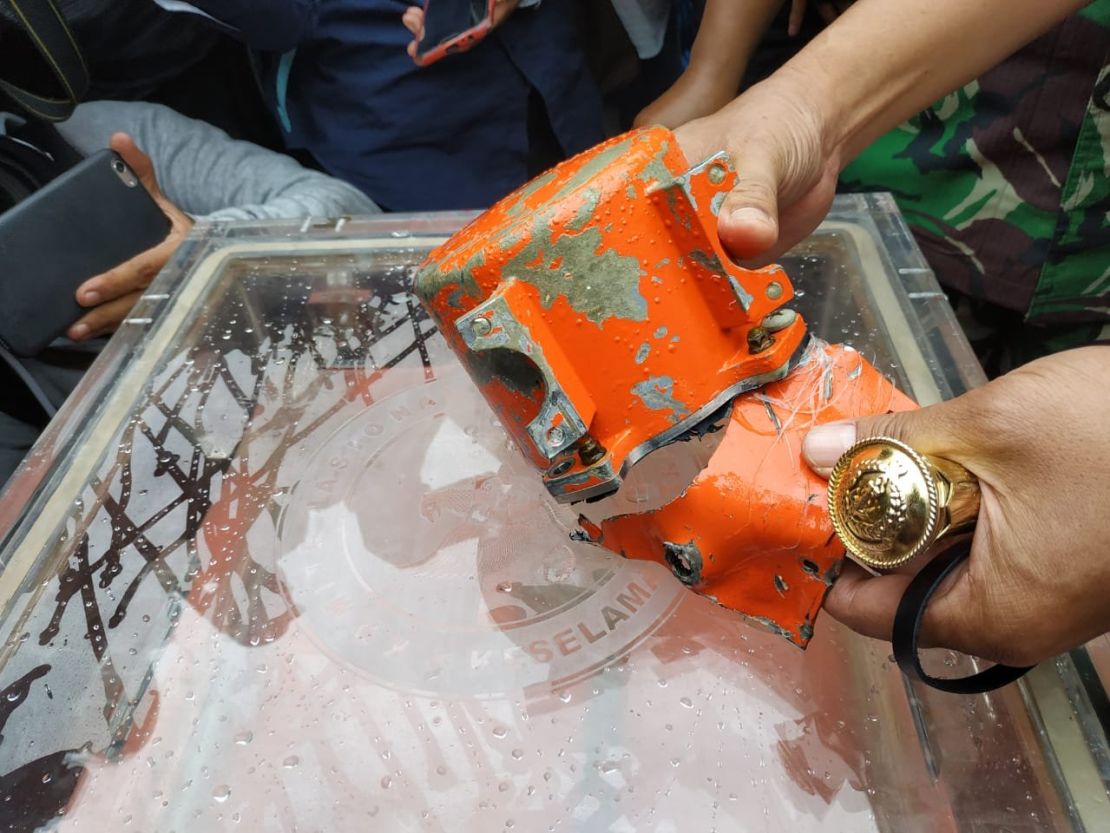Indonesian Navy divers have recovered the cockpit voice recorder from Lion Air Flight 610, a discovery that could help solve the mystery of why the brand-new Boeing 737 MAX 8 plunged into the Java Sea last October, killing all 189 people on board.
Divers and crew cheered when the device was lifted onto the deck of a ship Monday morning local time.
The cockpit voice recorder (CVR), which is one of two so-called “black boxes,” was buried under eight meters (26 feet) of mud on the seabed and was found inside the current search area of 500 to 1,000 meters (546 to 1,093 yards) from the crash site, Navy spokesman Lt. Col. Agung Nugroho told CNN.
The retrieval of the device, more than two months after the crash, is a significant breakthrough for investigators trying to piece together the final moments of Flight 610. The focus will now be on pulling data that investigators hope will contain audio of the pilots’ conversations.
The apparatus must be dried for four days and cleaned for another day before the audio can be downloaded, Captain Nurcahyo Utomo from Indonesia’s transport authority KNKT said at a press conference on Monday.
“That is the longest estimation process for downloading the CVR if all of the important components are in good shape,” he said.

But if technicians find the integrity of the device, which spent 77 days underwater, has been compromised, then it would need to be sent to the United States for assessment by manufacturer L3 Communications.
Nurcahyo added that investigators were not just interested in the conversation between the pilot and copilot.
“We also want to investigate other sounds in the cockpit – that will help us find out what happened and help us investigate what caused the crash,” he said.
Pilots fought to override automated system
The KNKT expects to publish a full report into the crash within 12 months.
Aviation expert Geoffrey Thomas said the CVR is an “exceedingly important discovery” and there is no reason authorities should not release the audio or transcripts to the public.
“The Indonesians are very conscious that the whole world is looking at them. I’m sure that the NTSB (National Transportation Safety Board) of the US will put enormous pressure to release it,” said Thomas, who is editor-in-chief of AirlineRatings.
The diving team also recovered some human remains, including bone fragments and other body parts, officials told CNN.
The plane’s flight data recorder was pulled from the seabed on November 1 but the CVR was detached from it.
Flight 610 was carrying 181 passengers, six cabin crew members and two pilots from Jakarta to Pangkal Pinang on the island of Bangka.
A preliminary report from data retrieved from the flight recorder showed pilots repeatedly fought to override the plane’s automatic safety system, which pulled the plane’s nose down more than two dozen times before the crash – but the CVR is needed to shed light on what pilots were saying and why the safety feature was not turned off.
According to the report, the pilots first manually corrected an “automatic aircraft nose down” two minutes after takeoff and performed the same procedure repeatedly before the plane hurtled nose-first into the Java Sea.
A different flight crew had experienced the same issue on a flight from Denpasar to Jakarta the previous day, but had turned off the automatic safety feature and taken manual control of the plane.
Questions about the aircraft’s design
The system is new to Boeing’s MAX 8 planes and automatically activates to lower the nose to prevent the plane from stalling, based on information sent from its external sensors. Indonesian investigators have already pointed to issues with the plane’s angle-of-attack (AoA) sensors, which had proved faulty on earlier flights.
In photos: Lion Air plane crashes off Indonesia
AoA sensors send information to the plane’s computers about the angle of the plane’s nose relative to the oncoming air to help determine whether the plane is about to stall.
Analysts said finding the CVR was imperative if investigators are to determine whether the crash has implications for other airlines collectively operating thousands of Boeing 737 flights around the world each day.
A lawsuit against Boeing related to the crash was filed in late November. The family of Harvino, the pilot in charge of the Lion Air plane is suing the company, claiming that the MAX 8 had an unsafe design. The suit alleges Boeing failed to communicate information about a new safety feature that hadn’t existed in previous 737s.
Speaking to CNN on Monday, Harvino’s sister said she was happy the CVR had been found. “I’m really happy because we can know more about the causes of the incident,” Vini Wulandari, 36, said.
Harvino left three children, a girl aged eight and two boys aged six and 18 months. “Life has changed a lot since the crash,” Wulandari said. “He had three little children. They will grow up without a father and it makes us very, very sad.”
Lion Air’s operational director has also accused Boeing of withholding information from pilots in the manuals about the feature that automatically lowers the airplane’s nose to prevent or exit a stall.
However, Boeing chief executive Dennis Muilenburg told Fox Business Network in November that information was available as part of the training manual.
“We are confident in the safety of the 737 MAX. Safety remains our top priority and is a core value for everyone at Boeing,” a spokesperson said at the time.
CNN’s Ivan Watson, Euan McKirdy and Lauren Said-Moorhouse contributed to this report.













































